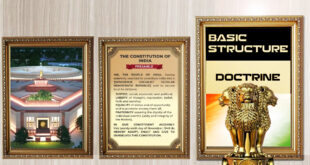The opacity in the Rafale deal only raises doubts, with its fallout on national security and the ‘Make in India’ programme The controversy over Prime Minister Narendra Modi’s decision to go in for an outright purchase of 36 Rafale fighter jet aircraft, after scrapping the old negotiations, is unlikely to die down. The Congress party has yet to find a smoking gun and hopes that a joint parliamentary committee probe might reveal it. The government has meanwhile tied itself up in knots by making opaque, and often, contradictory statements, in turn raising more doubts and questions. From 126 to 36 There are three questions that the government needs to address to neutralise the snowballing controversy. The first is the rationale for the announcement made by Mr. Modi, during his official visit to France, in April 2015, that India would buy 36 Rafale aircraft in a government-to-government deal, thereby scrapping ongoing negotiations with Dassault Aviation for 126 aircraft. The process for acquisition of 126 aircraft to replace a part of the aging fleet in the Indian Air Force (IAF) had begun in 2000. After prolonged deliberations, a Request for Information was issued and based on the responses, technical specifications drawn up and a global tender issued in 2007 for 126 aircraft, with 18 to be delivered in flyaway condition and 108 to be assembled by Hindustan Aeronautics Limited (HAL) with gradually increasing domestic content. Six bids were received and technical evaluations over four years led to the short-listing of two — the Eurofighter Typhoon and the Rafale. Evaluation of financial bids in 2011 led to the Rafale’s selection and negotiations commenced with Dassault in 2012. The Indian Air Force strength had reduced to around 32 squadrons against its authorised level of 42. Instead of fast tracking the negotiations, former Union Defence Minister A.K. Antony was indecisive, thereby prolonging the process. Negotiations were carried forward by the Modi government and in the run-up to Mr. Modi’s visit, official statements indicated that negotiations were in final stages. Inexplicably, these were jettisoned. Then Defence Minister Manohar Parrikar acknowledged that he was unaware of the decision. The decision for 36 aircraft was only formalised by the Defence Acquisition Council and the Cabinet Committee on Security after the visit and the formal cancellation of the negotiations for 126 aircraft announced in the middle of 2015, generating speculation about the Paris announcement. Last week, a bench of the Supreme Court, headed by the Chief Justice of India, Ranjan Gogoi, sought details of the ‘decision making process’ before the next hearing on October 31. The aircraft are to be delivered between 2019 and 2022. Meanwhile, the government invited Expressions of Interest in April 2018 for 110 fighter aircraft, 17 in flyaway condition and the balance to be assembled in India, but assembly was not restricted to HAL. It has since received responses from the same six manufacturers. This makes it clear that the shortfall will not be made up by the indigenous Tejas aircraft which is suffering from delays and cost over-runs (HAL has raised the cost of Tejas Mark I from Rs. 135 crore in 2006 to Rs. 268 crore and Tejas Mark IA, in design stage, is quoted at Rs. 463 crore). The second question relates to pricing. Since the earlier negotiations for 126 aircraft were never concluded, a straightforward comparison is not feasible. Earlier negotiations did not cover weapon systems or the performance guarantees and spares. However, since the Modi government boasted that it had negotiated a better deal and promised to provide details, it has now been hoisted with its own petard. It proudly announced that it had obtained a 50% offset undertaking which would give a boost (nearly Rs. 30,000 crore) to the ‘Make in India’ programme in the defence sector. Perhaps, it failed to realise that the higher offset would be factored into the aircraft price, driving it higher.
Source : https://www.thehindu.com/todays-paper/tp-opinion/decoding-the-rafale-controversy/article25232101.ece
 Chinmaya IAS Academy – Current Affairs Chinmaya IAS Academy – Current Affairs
Chinmaya IAS Academy – Current Affairs Chinmaya IAS Academy – Current Affairs



